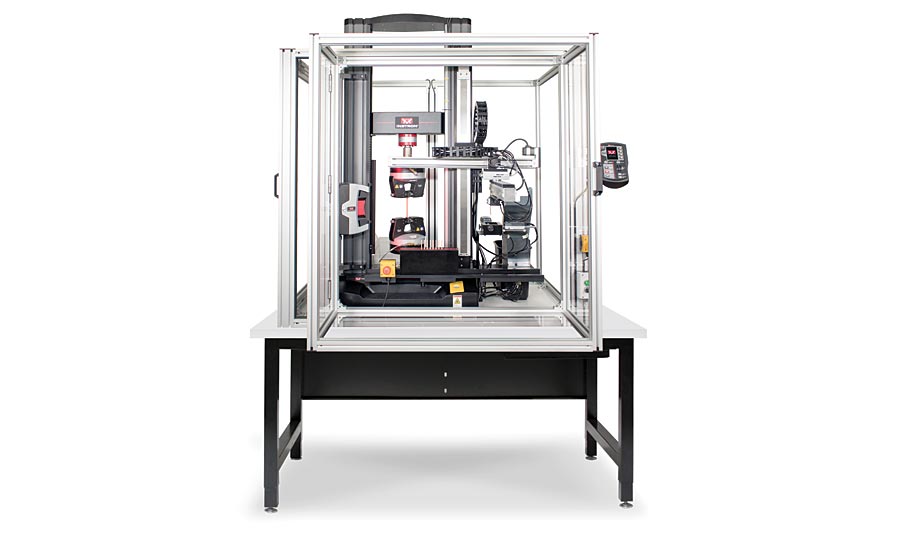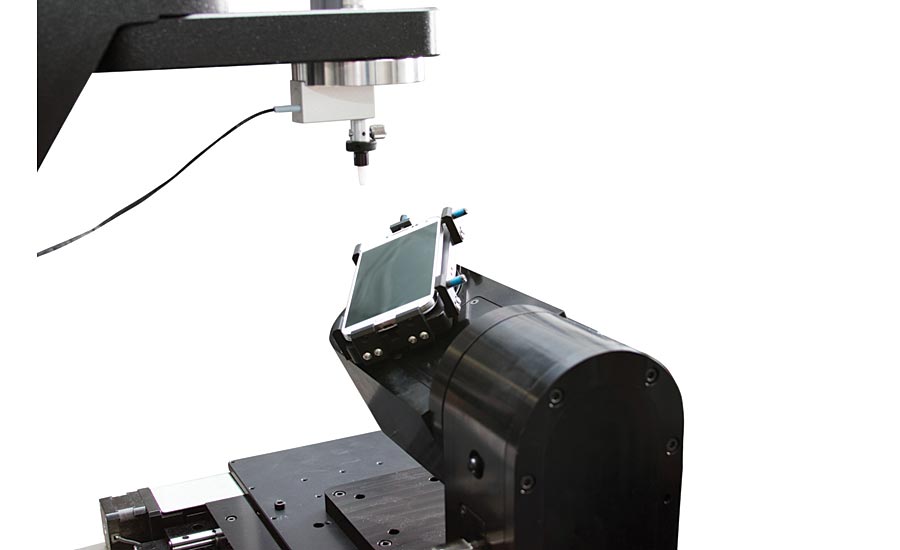With today’s demands for safe and reliable consumer products, it’s a sure bet that words like efficiency, throughput, repeatability, and safety are often being tossed around in quality assurance departments. The QA department is a manufacturer’s last chance to ensure that their products will be robust and reliable when they reach consumers, and the importance of efficient, repeatable, and accurate testing cannot be overstated. Fortunately, all of these qualities can be greatly improved by automating some or all of the testing process.
One of the most important requirements for quality testing is to ensure that the test results are repeatable—that similar tests on similar specimens produce similar results. Repeatability is an indicator that the results can be trusted and that the test is being performed properly every time. Without repeatable results, retesting might be required, which can be very costly.
Improper specimen identification, measurement, and alignment all play a part in creating non-repeatable results. Procedural errors, where different operators do not perform tests the same way throughout the day and from shift-to-shift, are also a source of inaccurate test data. A well-trained operator is crucial to ensuring the integrity and accuracy of results, and when operators change jobs or turnover becomes an issue, significant resources need to be expended on training new operators while production time is lost. A fully-automated system, on the other hand, requires minimal training and provides reliable and accurate results.
Safety is also a very important consideration for anyone using testing systems. Any system which requires operators to interact with moving parts is a source of potential injury, and injury-related expenses can be extremely costly both to the injured party and to the organization. An automated system, where the operator loads specimens into a tray or storage rack instead of into the system itself, adds an additional layer of safety to the testing process. Adding automation to the testing process will decrease repetitive motion injuries and eliminate pinch hazards, ultimately reducing operator injuries and saving valuable time and money.

The AT6 is a six-axis robotic system capable of testing hundreds of specimens per day and can run 24/7. AT6 systems can be equipped with two tensile testing frames serviced by a single robot to increase throughput, and third-party devices can be integrated, such as a chemical analyzer, hardness tester, or roughness tester.
Many QA labs are responsible for testing a high volume of specimens every day, so test efficiency and throughput are a major area of focus. For these labs to operate effectively, it becomes imperative to maximize the number of specimens that can be tested each day. Each test has four distinct phases where time can be saved by streamlining the process: specimen measurement, specimen loading, actual testing time, and specimen removal. There are various types of automation that can be added to a testing system to improve efficiency in these areas, from individual accessories that perform a single action all the way up through full automation of the entire process. These features also help to improve repeatability and safety, adding up to an overall superior testing process and more effective QA department.

Using a three-axis design, the AT3 includes barcode scanning and in-line specimen measurement to increase laboratory efficiency. Advanced extensometry (automatic contacting AutoX 750 or non-contacting AVE 2) are commonly used with the AT3 platform.
All tests begin by measuring the specimen and inputting its dimensions into the testing software. Operators often do these tasks manually, which slows down the testing process and introduces opportunities for calculation or input error, which can dramatically affect test results. Automatic specimen measuring devices (ASMDs) measure the specimens and input their dimensions automatically, eliminating opportunities for operator error. ASMDs can even calculate the median and mean of multiple readings, which is required for some testing standards and which would otherwise add extra work for the test operator.
Automated testing systems are an extremely useful tool for labs that must test many specimens in quick succession. These systems allow the operator to load a tray with specimens and the machine automatically loads the specimens into the system without the need for operator intervention, minimizing human error and improving repeatability and reproducibility. Multiple removable racks allow operators to pre-fill specimens into inactive racks while the system is still running, allowing testing to continue uninterrupted. Because the test operator never needs to interact with the moving parts of the system, automatic specimen loading also increases operator safety.
Automated testing systems work in tandem with pneumatic grips, which automatically close on the specimen with a prescribed gripping pressure, reducing the likeliness of the specimen slipping out of the grips and requiring a retest.
Labs that test devices or components may often need to test multiple points on the same device, meaning that the operator needs to reposition the specimen several times during a test. An x-y table is a moving table that repositions the specimen automatically, which eliminates the need for an operator to enter the testing space.
Automatic extensometers provide consistent results because they automatically attach to the specimen and measure its gage length. Furthermore, automatic extensometers can stay attached through failure, which eliminates the need for an operator to remove it after yield.

The AT2+ is an automated XY stage with an additional degree of control, allowing the system to reach test points on multiple axes.
For the majority of QA testing, an automated system will significantly increase efficiency. Of course, there are some applications where automation may not be the most efficient solution. In cases where materials have high elongation or require very low testing speeds, the testing time itself can be the most time-consuming part of the process, and the only way to increase efficiency is to test multiple specimens simultaneously. In these cases, a more efficient solution may be a multi-station testing system, which use multiple load strings to simultaneously test multiple specimens.
A fully automated system is one in which operators are only needed to ensure the specimen rack or tray is full. The system itself makes all the specimen measurements, performs the test, collects the data, and even disposes of specimens after the test is complete. Full automation removes operator variability, increases repeatability, and reduces or eliminates costs associated with retesting. Fully automated systems allow operators to execute other value-added activities while tests are being run. Some systems are even able to store enough specimens to run unattended tests overnight, allowing QA labs to increase throughput without having to pay operators to work additional shifts. Additional tests such as hardness, surface roughness, and chemical analysis can also be integrated into automated systems, adding even more time savings. Q






